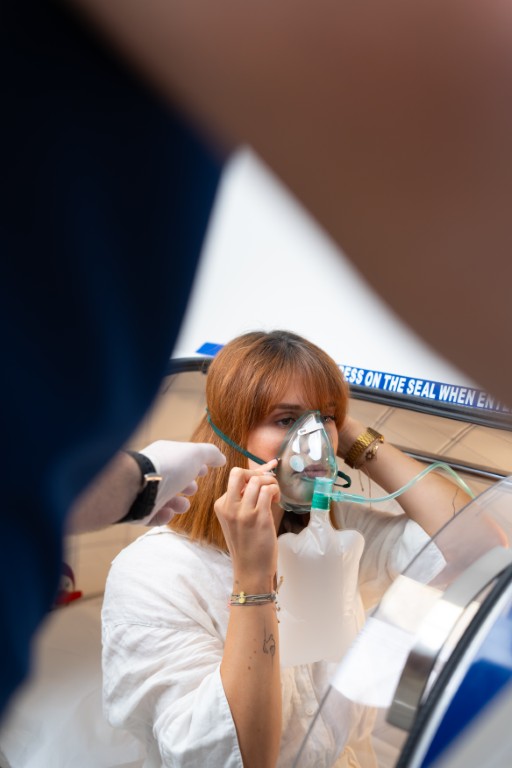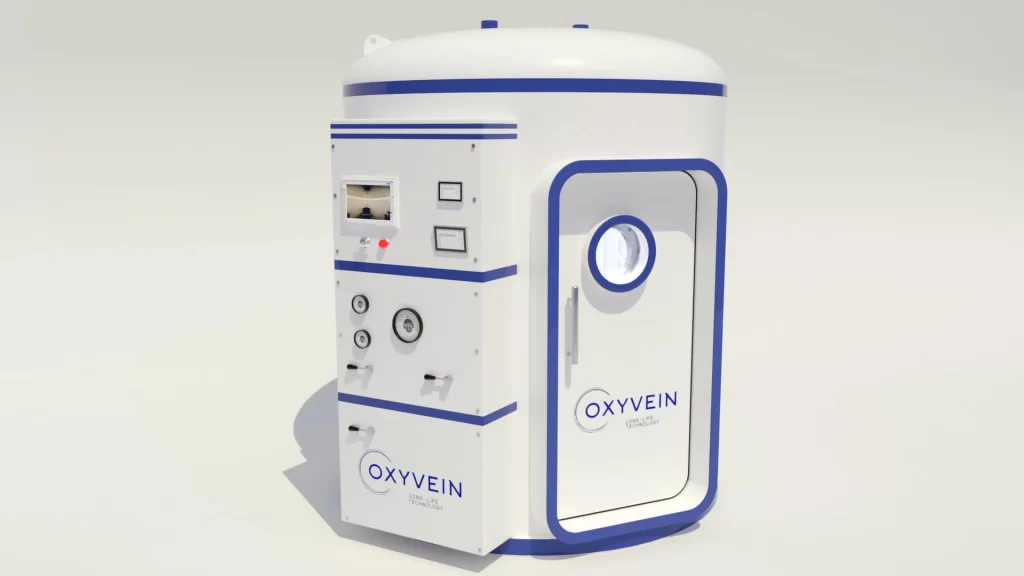
Learn how oxygen deprivation affects the body and how modern therapies like HBOT and ozone therapy can aid in recovery.
Oxygen is a colorless gas that we breathe every day, without thinking about how crucial it is to our health and life in general. But behind every inhaled particle of oxygen lies a complex biochemical process that keeps our cells alive. When the amount of oxygen becomes deficient – whether due to environmental, metabolic or health reasons – the body feels it on many levels. We will try to explain in an understandable way why oxygen is so important, what happens in the body when there is not enough of it, and how modern therapies such as hyperbaric oxygenation (HBOT) can help replenish it and restore cells.
After we breathe in oxygen, it enters the bloodstream through the lungs and binds to hemoglobin in red blood cells. It then travels to every part of the body – the brain, the heart, the liver, the muscles – where it is released and enters the cells. There, the oxygen is used in the mitochondria – the energy “factories” of the cell – in a process called cellular respiration or oxidative phosphorylation.
In this process, the body produces ATP (adenosine triphosphate), a molecule that is the main source of energy for all cellular functions. Without oxygen, this energy production system does not function, which means that the cell cannot perform basic functions – from repair to growth, exchange of substances and communication with other cells.
The condition of reduced oxygen supply to tissues is called hypoxia. It can be acute – as in suffocation, heart attack or stroke – or chronic, as in lung disease, anemia, impaired microcirculation, long-term inflammation or post-COVID syndrome.
Hypoxia results in:
– decreased ATP production,
– accumulation of harmful byproducts (lactic acid),
– increased oxidative stress,
– cell death if hypoxia persists.
The body tries to compensate for the lack of oxygen by breathing faster, increasing blood pressure, increasing heart rate, and redistributing blood flow to vital organs. But when these compensations no longer work, damage occurs to organs – primarily those most sensitive to oxygen: the brain, heart, and kidneys.
Hypoxia can occur due to various mechanisms:
– Lung diseases (COPD, asthma, fibrosis) – reduce the lung’s capacity to absorb oxygen.
– Anemia – lack of hemoglobin reduces the ability to transport oxygen.
– Poor circulation – poor blood flow (e.g. in diabetes, arteriosclerosis) prevents oxygen from reaching the tissues.
– Long-term inflammation and chronic diseases – consume oxygen, change cell metabolism.
– Air pollution and lifestyle – smoking, stress and sedentary lifestyle further worsen oxygen supply.
– Post-viral syndromes (e.g. long COVID) – can disrupt oxygen regulation and microcirculation.
Increasing the body’s oxygen levels is not achieved simply by breathing deeper. The key is in the quality of breathing, the condition of the lungs and circulation, as well as the ability of the tissues to utilize that oxygen.
Ways to increase oxygen levels include:
Ozone therapy is a medical method that uses a mixture of medical oxygen and ozone (O₃) for therapeutic purposes. Ozone has a strong oxidative potential and stimulates the processes of regeneration, immunomodulation and improved tissue oxygenation.
It is most often applied via:
Benefits of ozone therapy:
Unlike HBOT, which uses pure oxygen under elevated pressure, ozone therapy encourages the body to use available oxygen more efficiently, thereby contributing to cellular health in a different, but complementary, way.
HBOT is a method in which the patient breathes medical oxygen under increased pressure (usually 2 ATA – atmospheres) in a specially designed pressure chamber. Unlike normal breathing where oxygen binds only to hemoglobin, under pressure it dissolves into plasma – thus reaching those parts of the body where blood flow is reduced or compromised.
Benefits of HBOT:
– Increases tissue oxygen saturation up to 20 times,
– Supports the regeneration of damaged cells,
– Reduces inflammation and edema,
– Stimulates the growth of new capillaries (angiogenesis),
– Reduces oxidative stress and supports the immune system.
This method is used in the treatment of:
– chronic wounds and diabetic foot,
– stroke and neurological rehabilitation,
– post-COVID syndrome,
– rheumatic diseases and autoimmune conditions,
– chronic fatigue and exhaustion.
You can learn more about mechanisms and research in professional publications:
– https://pubmed.ncbi.nlm.nih.gov/23379675/
– https://www.ncbi.nlm.nih.gov/pmc/articles/PMC6700580/
– https://www.uhms.org/resources/research.html
Oxygen is much more than a simple gas – it is key to the survival of every cell in our body. When it is lacking, a whole range of physiological processes are disrupted, and symptoms often go unrecognized for a long time. This is precisely why the growing role of therapies that target oxygen supply is becoming increasingly important in modern medicine.
Hyperbaric oxygenation (HBOT) and ozone therapy are two complementary methods that help the body not only receive more oxygen, but also use it more efficiently. While HBOT directly increases oxygen levels in the tissues through pressure, ozone therapy stimulates metabolic and immune mechanisms that further improve oxygen supply and utilization.
In times of chronic stress, polluted air, sedentary lifestyles and increasingly common post-viral syndromes – precisely these therapies can represent a key part of preventive and regenerative care. Oxygen, supported by modern technology and the body’s natural mechanisms, is becoming an ally of health that we need today more than ever.
Note: This content is for informational purposes only and does not constitute medical advice or replace consultation with a professional healthcare professional.
Contact phone
Mobile phone

The first and only medical device of its kind in Croatia – this chamber represents the pinnacle of efficiency and comfort in therapy. It is designed to support the treatment of complex health conditions, as well as to enhance the body’s resilience and endurance.
Starting next month, you can personally experience its benefits and recommend it to those who matter most to you.